Check Out Our Store
2/20/2019
Whether its books, zines, posters, sketchnotes, or teaching resources for the classroom, our store has a range of products for teachers looking to expand their use of comics in the classroom. Comics in Education Presents: The 10
9/9/2018
The 10 is a series of books that use a Top-10 countdown format and graphical text to explore fascinating topics from sports, science, history, pop-culture, and a wide variety of other subjects. Whether they’re exploring the ten smartest animals or the ten greatest sports showdowns, students are encouraged to engage in inquiry-based learning tasks that extend learning and discussion outside the classroom. In 2009, the series received the Teachers' Choice Award for Children’s Books from Learning magazine. Here are many of the titles that I wrote for the series.
THE 10 SMARTEST ANIMALS
by Glen Downey Think you're smarter than your pet dog, Fido? Think again! From monkeys that do math to pigs that play video games -- you'll be shocked at just how smart some animals are. What do you think it takes to win the title of world's smartest animal?
MOST DECISIVE BATTLES
by Glen Downey History, as they say, is written by the victors. When the future of a nation and even the fate of the world can be decided on the battlefield, it's no wonder armies will do anything to come out on top. What decisive battles would you put on the list?
HOTTEST HOLLYWOOD CARS
by Glen Downey and Maria Malara Nothing makes more of a statement than an amazing car. From cool gadgets to luxury accessories to superhero drivers, these cars all stand out from the rest of the pack. Which car do you think is Hollywood's hottest ride?
MOST SIGNIFICANT DOCUMENTS IN HISTORY
by Glen Downey Whether they were carved in stone, written on bamboo, or woven into a belt, each of the documents in this book has played an important role in shaping our world. What do you think is the most significant document of all time?
GREATEST HOCKEY TEAMS OF ALL TIME
by Glen Downey and Kirsten Tenebaum Many great hockey teams have been assembled over the years. From the innovators to the trail blazers to the record breakers, there have been many teams throughout hockey's history that have stood out from the rest. How do you pick hockey's most outstanding teams of all time?
COOLEST FLYING MACHINES
by Glen Downey and Sandie Cond Ever since humans figured out how to fly, people have come up with all sorts of ways to take to the skies. The fastest jet in the world, the fanciest jetliner ever built, the stealthiest spy plane service -- these are some of the coolest ways to fly! Which do you think is the coolest?
MOST REVOLUTIONARY MILITARY INVENTIONS
by Glen Downey From giant bomber planes to invisible chemical and biological weapons, military inventions come in all shapes and sizes. Take a trip through time as we investigate which weapons have had the biggest impact. Which military invention really was the most revolutionary... and deadliest?
MOST MEMORABLE TV MOMENTS
by Glen Downey From a heroic sports finale to the debut of educational programming for kids, you'll be amazed at the way TV has allowed us to experience memorable moments. Find out why these moments had people around the world on the edge of their seats. What do you think is the most memorable moment in television?
MOST UNFORGETTABLE NASCAR MOMENTS
by Glen Downey High speeds, skilled drivers, and big prizes -- that's what NASCAR is all about. From a million-dollar prize to an unexpected crash, you'll find out what makes auto racing fans so passionate about this exciting sport. What is it about a NASCAR race that makes it so memorable?
MOST SHOCKING SPORTS SCANDALS
by Glen Downey Welcome to the wild world of sports! From cheating in games to bribing judges in competitions, this book ranks the shocking scandals that ruined some of the biggest names in the game. Have we made winning the only thing that matters?
MOST MEMORABLE SPORTS SHOWDOWNS
by Glen Downey The stakes are high, the crowd is pumped, and tension fills the air. The arena is about to turn into a battlefield as we relive the 10 greatest sports showdowns. Are you ready to face some of the fiercest competitors in sports history?
MOST REMARKABLE WRITERS
by Glen Downey and Jayn Arnold From tales of Middle-Earth to moving poems, exceptional writers have wowed us with their incredible talents. Find out how each of these 10 remarkable writers made their mark on the literary world. Who is the most remarkable writer? For more information on "The 10" click the button below!Support Comics in Education
6/14/2018
This website wouldn't be possible without the support of its users. Since it's inception in 2014, the site has seen more than 2,000,000 hits, and its numerous articles and blogs have helped to support the research and pedagogical practice of comics in the classroom. If you have used the site and would like to help support it, please consider a small donation.
Thank you for your support, and please continue to enjoy everything that the site has to offer. --Glen Downey, Founder, Comics in Education Sketchnoting the IB Paper 2 Outline!
3/16/2018
Got an exam? Try this approach!Sketchnotes are cool. You only need to look through examples of visible thinking, visual brainstorming, and sketchnoting on this site to see that they can be pretty useful. So, now that we're in the season of IB examinations, do you have a way of approaching your English A: Literature Exam? If you don't, you might consider having a look at the above sketchnote. Begin in the centre and then make your way around. If you keep these things in mind as you're writing your exam, you should have a decent opportunity to do well. More to the point, however. If you are making notes for any of your exams, try for a minute to let go of your inhibitions and just put down the first thing that comes to mind. Sketchnoting is a great way of leveraging the power of comics, doodling, and visual narrative to create something that reflects what you're thinking. As you can see in the above example, I actually drew very little, but the arrows and the small diagrams are helpful in allow the reader to visualize things. Hope this helps you as you prepare for your English A: Literature Paper 2 exam! And if you have any questions... ...feel free to contact us at Comics in Education! If I had a dollar for every time I’ve heard someone say that “Comics aren’t real literature,” I’d have enough money to get a photo with my favorite celebrity at a decent-sized comics convention. I figure I’ve heard it said about a hundred times over the course of my career, and that should be plenty for the photo, unless I wanted one with Mark Hamill and James Earl Jones, and hell, who wouldn’t pony up the extra for that? Now I know you’re probably thinking that this is going to be an article in which my Ph.D. in English and I prove how comics really are literature and that people who say otherwise are stupid. I think I’m actually going to do something more useful, which is to show that the entire discussion is stupid. To say that “Comics aren’t real literature” is wrongheaded, but not for the reasons people who object to such statements might expect. It’s for all of the other reasons. For starters, let’s think about what the statement, “Comics aren’t real literature” can actually mean: 1. “Comics are imaginary literature.” I think it’s safe to say that if this is what people mean when they say “Comics aren’t real literature,” they have more problems than you or I can help them with. 2. “Comics merely pretend to be real literature.” Anyone who has ever read a comic should realize that comics aren’t people and can’t pretend to be things. Again, neither you nor I is equipped to deal with such a person. 3. “Comics are mistaken by people for real literature and they’re not.” Go up to a bunch of people reading comics and ask them what they’re reading. Keep track of how many times they turn to you and say, “I’m reading real literature.” I think it’s more likely that 100% of the time they’ll say, “I’m reading a comic book.” Notice, as well, how they’re not fretting about whether what they are reading is “real literature.” 4. “Comics are comics and real literature is real literature.” I absolutely agree that comics are comics. This is true by definition, and I think you’d have to be pretty dim to argue otherwise. I also agree that real literature is real literature whatever “real literature” means. Unfortunately, however, that’s all that the statement manages to prove. 5. “Comics aren’t like plays, novels, or essays. Those things are real literature.” Comics are usually comprised of art, with or without text, arranged in sequence. As such, they are different from plays, novels, or essays. The latter, however, have their own unique characteristics which make them different from one another. Do you know what the above statement doesn’t really prove, though? Whether or not comics themselves are or are not literature. 6. "Comics might technically be “literature,” but they’re not real literature. " You know what…I’m not sure that people who say this actually believe that comics are literature. They use that word “technically” and it leads me to believe they’re being disingenuous. More than that, however, I’m intrigued about the difference between “literature” and “real literature.” I’ll bet you dollars to donuts that they can’t properly articulate the difference between these expressions either. 7. "COMICS ARE SILLY AND REAL LITERATURE IS IMPORTANT!” Of all of these statements, this is the one I most respect. It’s at least the product of a person who knows what he or she means. Ninety nine percent of the time when people say, “Comics aren’t real literature,” this is what they are actually saying. Unfortunately, it’s still stupid and wrongheaded. Consider, for instance, one of the twentieth century’s most important poets of light verse, Ogden Nash, and his most famous poem, “Reflections on Ice-Breaking”: Candy Is Dandy But liquor Is quicker. Now, I love Ogden Nash and I don’t believe he’d mind my thinking that his poem is just a little bit silly despite the fact that it’s occupied the hallowed pages of The Norton Anthology of Poetry. In fact, if you think for a moment about what it’s saying, “silly” is perhaps flattering by today’s standards. On the other hand, when I read Alan Moore and Dave Gibbons’ Watchmen I don’t find it silly, nor would I feel comfortable telling Sarah Leavitt or Alison Bechdel that they were being silly in Tangles or Fun Home for sharing their very personal stories in comic form. I know that The Joker often acts quite silly, but there’s something about him—his consistent lack of motive—that is anything but silly. I don’t often see this quality in other characters, although Shakespeare’s Iago has been offered by some as a point of comparison. I think the point of all of this is that those who say “Comics aren’t real literature” don’t really understand how ridiculous such a statement is. I suppose I don’t mind it as much when people say “Comics are real literature,” although I can’t help but wonder whether they know what they’re talking about either. Comics are a form of artistic expression that (usually) comprises both the textual and the visual, and so focusing only on the former leads to people doing silly things, like overlooking Jillian Tamaki for a Governor General’s Award for the graphic novel, Skim, because she “only” illustrated it. For some, it’s easier, more comfortable even, to deal in absolutes. And, as we all well know, only a Sith does that. That’s right, I’m ending with another Star Wars reference, just because I want this whole silly debate about comics and literature to be over… …or to at least become more interesting.
There are many reasons why Margaret Atwood is awesome, not the least of which is her poetry. I've taught it many times and have had great success with it, especially when it comes to having students connect with it. A great example, that I've shared in the past, can be found in a previous post, "Margaret Atwood, Comics, and the Awakened Imagination."
When I read Atwood, what strikes me is her curiosity about things that have a kind of dual nature. I don't know...maybe that's the wrong expression. It's things that we can't pin down or fix...whether it's snakes, or photographs, or mushrooms, or the moon, or mirrors...
When we take a look at this little visible thinking exercise, I think there's a lot we can take away from it. I've always loved reading Atwood because of her preoccupation with the strange and delightfully odd nature of seemingly mundane things.
That's what a great poet does--they think about these things. Then, they let their gift with words do the rest.
If you enjoyed this article then you might also enjoy...
Writing a Graphic Novel, Part 1
4/29/2017
1. Tell a story that's never been toldWhen it comes to writing a graphic novel, look for inspiration from stories that have gone untold. A great source of such stories is history, but the history for which we don't necessarily know the whole story.
When I was writing Final Voyage for the Boldprint Graphic Novel series, I was trying to think of such a story when I stumbled upon an explorer I remembered studying in my youth: John Cabot, aka Giovanni Caboto. I remember learning when I was just a little guy that Cabot had sailed the ocean blue in 1497 and discovered eastern Canada. However, I don't remember us ever talking about his second, and final, voyage. In 1498 he headed out again, but this time he didn't come back to receive the adulation of England's King Henry like he did after his first voyage. This time, he and his men were lost. Writing a graphic novel about an historical event for which we don't have many of the answers is sometimes just the sort of thing we need to push through writer's block and get back on track. Having part of the narrative gives us some place to start, and while this is being established there is time to fill in the gaps and work out what might have been. Anything that allows us to be productive while we're working out the story can't be all that bad. In Search of Lost Time
4/14/2017
Reimagining Traditional Approaches to the TimetableNow available at www.comicsineducation.com is In Search of Lost Time: Reimagining Traditional Approaches to the Timetable. This book is the product of a Canadian Accredited Independent Schools (CAIS) Research Grant and brings together a combination of research, investigation, sketchnoting, writing, and 21st-century approaches to teaching and learning in order to show how schools can reimagine the way in which they go about making institutional change. Here's the blurb from the back cover: "This book offers an approach to developing what educators have traditionally thought of as a `timetable' that is appropriate for 21st-century, independent, K-12 institutions in Canada. It suggests that timetabling as we currently understand it is insufficient in meeting the needs of learners, primarily because traditional timetables are inconsistent with existing pedagogical philosophies about teaching, learning, and curriculum delivery that are shaping the way these processes are changing in our schools." The book is being released in advance of the CAIS Project 2051 reunion and National Leaders Conference, both of which take place in Montreal later this week. For those interested in ordering the book, it is available exclusively through our store. Visual Lesson Plans
4/14/2017
Give students an agenda to stare at!The next time you want to put together an agenda for your students or a lesson plan, consider a new way of thinking about how this information is shared. A neat thing to do is to bring the visual to the experience so that what the students are learning looks as exciting as how you'll hope they find it.
The lesson overviews above might look complicated, but the combination of a set template and using some of the features of Photoshop Elements allowed me to produce them in very little time. What they say to the student, especially at the outset of the year, is that your course is different from others that they might be taking: that the expectations are high and that you want them to think in different and creative ways. If you want a fuller explanation of how lesson plans, overviews, or agendas can be put together in the manner I've described, please feel free to use the contact button below to get in touch! Six months and 23 books later, I've managed to find a few moments to post to Comics in Education. Thanks so much for those who have been in touch in the interim, and hopefully I'll have some time to bring you some of the exciting things that are happening in the world of visual narrative. It's always nice to start with what's being produced by young people, and to that end, here comes a brilliant sketchnote put together by Pooja Devnani, a talented young artist and thinker who's taken "The Clod and the Pebble" by William Blake and run with it. Sketchnoting provides students with such a great opportunity to express their ideas in a way that makes sense to them. Some students simply want to write, others want to draw, and still others are far more comfortable mediating between the two. But look what happens when you zoom in for a closer look. It's not simply in the visual beauty of the sketchnote that Pooja makes meaning, but in the minutest details, from the connections among the various ideas to the Christian iconography to the interplay between the two.
When such time and care is put into a sketchnote like this, it simply allows for a greater rumination on the part of the student on the poetry being examined. Thinking is beautiful. Sketchnoting teaches us this. More to come, so stay tuned... Thanks to everyone who came out. Here is the presentation and a helpful workshop package!
Thanks so much for everyone who came out today. As promised, here is the Prezi as well as a handout just for all you teachers out there! Remember, if you're interested in continuing our discussion, just get in touch with me through the contact tab. Enjoy the rest of TCAF!
I thoroughly enjoyed my time this past weekend at CITE 2016, the annual meeting of the Conference of Independent Teachers of English. For those of you who attended my sessions, and for those of you who didn't but are interested in the material, here are the Prezis for your viewing pleasure!
Seeing through the Gaze: Using Critical Theory to Teach Advertising, Visual Narrative, Literature and FilmBest Class Ever! -- The Technology Edition
Glen Downey, Comics in Education, www.comicsineducation.com
A new issue of Martian Comics -- "The Canals of Earth" -- is coming your way in an exciting courtesy of new Kickstarter! Before you do anything, check out the video above and then lend your support to Julian Darius and Kevin Thurman's exciting new addition to the series.
Julian was kind enough to answer my questions about the series. It's this kind of thoughtfulness, insight, and love of comics that makes Martian Comics Why Martian Comics? What was your original motivation for the series?
Kevin Thurman, my co-writer, had an idea for a story, and we'd talked about it in several iterations. He revised it again, tying it to the sci-fi backstory I'd created for the publisher Martian Lit! So from there, I was locked into the concept, and I felt invested in it. And it just snowballed from there.
But I love the title "Martian Comics!" It's such a throwback to things like Adventure Comics or Action Comics. And I meant that title as a kind of umbrella designation, indicating that we're building a universe here that's bigger than any single story. What does "The Canals of Earth" bring to the series?
"The Canals of Earth" is the story of the early days of Mars-Earth relations. Most of it is a flashback, as we watch ancient Martians looking towards Earth and imagining a Martian goddess named Earth, the same way humans once imagined a god named Mars. We also see Martian science-fiction, in which Earth is imagined as a very Martian-like society, but more advanced and eager to invade Mars. This science fiction evolves. And we track the whole relationship through the Martian space age.
In terms of the larger series, this story occurs thousands of years prior to almost anything we've seen so far. Martian Comics is simultaneously running "The Girl from Mars" and these other stories. Those stories are part of a large short story collection. "The Canals of Earth" would be a very early story in that collection, in which we see Mars-Earth relations grow and change over millennia (and see lots of other stuff evolve too!). "The Canals of Earth" does give us our earliest depiction of Martian society, a glimpse of early Martian religion, and reference to a Martian city we've never seen before. We're building something big. But you can enjoy "The Canals of Earth" without any previous knowledge! It's just a good sci-fi story. What does the sophisticated reader take away from Martian Comics? What are you hoping they take away?
First, I just hope that people like the issue and enjoy the story. I think the art's beautiful, and the writing is beautiful, and if someone enjoys it, that's enough for me!
Second, I hope that people take away a kind of mind-bending way of imagining a very foreign perspective. We're not on Earth in this story. We're looking at how Mars has seen and imagined Earth. We're decentralized. And we're seeing Martians imagine that people on Earth would look like them. We're seeing how Martian science-fiction is a projection of Martian anxieties, and it's laughable but wonderful, in that old-school sci-fi way. Readers might be tempted to study the history of science-fiction after this issue! But I like this idea of a totally decentralized story, in which we're seeing a parallel of our own history but through alien eyes, and the entire story is this sort of distorted mirror that puts our own anthropocentric tendencies in stark relief. And maybe, just maybe, through that, some readers might see a parable of our own anthropocentrism and the need to imagine other perspectives! Maybe. In any case, there are things to think about here, places for the readers' brains to go! And I like giving readers these experiences, and seeing what they think about, which is never exactly what I'd think about -- and that's great! Third, on a more meta level, I hope the sophisticated reader sees a comic that demonstrates that comics can do this -- make people think. So many of the comics that have most affected me were intelligent. Certainly, the truly classics are. And I think you can be intelligent and entertaining at the same time. But I think that there's a perception that most of the smart comics being made are autobiographical or "non-genre," whereas the genre work tends to be flashy but a little thoughtless. Martian Comics is here to say, "No, you can do smart -- even really smart -- sci-fi comics that are still sci-fi, and unembarrassed about their genre, and fun!" "The Canals of Earth," in particular, really reminds me of some issues of Planetary, which was intelligent and played with genre and had the same sort of mix of smart fun. Comics can do this. We know that. And we need to get back to it. Where do you see the series going from here?
Everywhere. I'm in it for the long haul. We'll be continuing with "The Girl from Mars" and these other Martian stories for a while yet. We'll be getting out collected editions. Eventually, these other stories, like "The Canals of Earth," are going to be a massive volume spanning thousands of years, with different cultures and characters and historical trends being explored in a really sprawling way. I've got other ideas, other volumes, stories I want to tell. There's a very long-term plan here. We may only be on issue #5, but I'm currently writing a story that'll probably be in issue #13, and I've got plans for many dozens of issues' worth of material after that.
What do you think is the most compelling reason for readers of Comics in Education, or fans of comics in general, to support your Kickstarter campaign?
Because comics can do this. They can tell ambitious stories that can only be told in comics.
Best Class Ever!
As promised, here are the resources from my two presentations. First up is "Best Class Ever!" In addition to the Prezi, I'm including the workshop handout and the workshop package!
"With Great Power Comes Great Responsibility"
Check out the Workshop Package. Pages and pages of resources and ideas!
Just a quick note...Hi everyone! Just a quick note to let you know that I'll be presenting this coming week at Reading for the Love of It at the Sheraton Hotel in Downtown Toronto! This year's conference is the 40th anniversary of the event and it should prove to be a wonderful opportunity for educators to gather and share their stories. Here are the places where you can catch my presentations! Best Class Ever! The Top 10 Activities for the English/Language Arts ClassroomThursday, February 18th -- 10:45-12:00, Dominion South Friday, February 19th -- 12:45-2:00, Dominion North DescriptionGathered, collected, honed, and refined over the course of two decades in secondary and postsecondary education, the activities presented in this workshop are guaranteed to have your students coming up to you afterwards and saying, “Best class ever!” Whether it’s an activity based on a popular game show that brings out our passion for literature, a unit on World Mythologies that uses the framework of reality TV, or a hilarious poetry activity that sees students marry human emotions with mundane objects, participants will get a fist-hand look at some phenomenal classroom activities by getting right in there and having a blast doing them! Participants looking for a fun, activities-based workshop that can be taken directly back to the classroom need look no further. "With Great Power Comes Great Responsibility" -- The Top 10 Strategies for Teaching ComicsThursday, February 18th -- 12:45-2:00, Chestnut Friday, February 19th -- 2:15-3:30, Dominion South DescriptionUnderstanding that comics and graphic novels have a place in the K-12 classroom is one thing. Understanding how to teach them in a way that empowers students is quite another. This workshop provides practical teaching advice about using comics and graphic novels with struggling, reluctant, probcient, advanced, and even gifted readers and writers by looking at pedagogical strategies that maximize student engagement and build conbdence with the form. The tendency in the past has been to look at how using comics and graphic novels can improve students’ engagement with other literary genres, but this can only come about if students brst understand the visual narrative form they’re exploring. The workshop will feature a wealth of fantastic print and digital resources that teachers can start using right away in their classrooms One Fan Expo to Rule Them All...
9/13/2015
Despite having its detractors who complain about the long lines, expensive photo ops, and last-minute cancellations attendant with cons, Toronto Fan Expo 2015 was one hell of a good time. Let's face it...if you take that many nerds and put them in any kind of building, you're violating the principles of common sense. You're also bound to have a group of people that are friendly, fun to be around, and generally awesome.
Here were some highlights, one from each day of the conference, in no particular order: Friday evening: Q&A with James and Oliver Phelps
Saturday morning: Script Reading of Back to the Future

With acclaimed voice actors like Nolan North and Grey Delisle, it was impossible for this session not to be a hit. Throw in an assortment of voices ranging from the Penguin to Bill Cosby, and a cast of actors willing to go from PG-13 to R faster than a speeding bullet, and you can see why the session was such a hit with fans
Thursday afternoon: The crowd
If you only went to FanExpo on Saturday or Sunday and the crowds drove you mental, consider coming on Thursday next year. This birds-eye shot from the overlook shows that there is plenty of room for you to check out the North building. Not only that, but minutes later my family and I were sitting down at a table having pizza for dinner. That's right, we were actually sitting at a table! Sunday afternoon: The Dark Lord, Sauron 
I don't know what motivates someone to spend a warm Sunday afternoon at a crowded Fan Expo convention sweating inside a Sauron costume, but this stood out as a highlight when it came to the great costumes being worn this year. I mean, when you have children who love everything to do with Lord of the Rings, and, most especially, the villains, then you can't get any better than running into this guy.
Fortunately, his infernal graciousness was kind enough to pose for a couple of photographs just between the food court and Artists Alley before taking a couple of steps and being asked by someone else for a photo. Such is the price when you're the Dark Lord.
All in all, the show was once again a tremendous success. Despite being packed on the weekend and despite some of the strange ways we're lined up for events, the people in attendance are the ones who make the event -- kind, considerate, and respectful people who just want to nerd out with one another at the end of the summer each year.
There is everything to like in The Adventures of Whiz Bang, The Boy Robot. Coming to you from the wonderful imagination of Forrest C. Helvie and beautifully illustrated byMichelle Lodge, the book is perfect for parents and educators looking for great visual narratives for young readers. Here's how Forrest describes the project on his Kickstarter site:
This first full-colored volume contains the longer story of Whiz Bang and Amelia along with 2-3 short, stand-alone comic stories geared for an all-ages audience – especially emerging readers ages 4-7 that will enable readers to easily pick up any issue and follow along without facing the difficulties of continuity. Later volumes will include a continuation of this story along with additional short stories about Whiz Bang, Amelia, and later friends we haven’t met yet!
The book is already getting a lot of buzz, with an article on Bleeding Cool coming out yesterday. If you'd like to check out some of the sample pages, you can find them on the Issuu website. Take a moment to check out the publisher as well: Under Belly Comics.
Supporting this project shouldn't require much deliberation. It's a no-brainer. You can see that parents, educators, and members of the comics community feel the same way from the wonderful support it's already received.
Simply put, it's a beautiful book for kids.
A friend of mine who volunteers at a local public elementary school recently told me about an incident he found a little strange. He was working in the library when a grade four teacher brought her class in to get books to read. The teacher was giving the kids all of those instructions teachers give when they bring students to the library: be quiet, be respectful of other people, and ask the librarian for help. As the kids were heading for the stacks, however, she threw in one final instruction:
“Remember what I said in class – no comics!” My friend found it strange that the students—who routinely take out comics, graphic novels, and Japanese manga—were being instructed to avoid them. “I guess she thought they should be reading other stuff too,” he said. “No, that’s not it,” I replied. “She was trying to tell them that what they like to read is dumb.” I’ve often talked with teachers about my experiences as a young reader, and how I was encouraged to read “more challenging” books rather than the superhero comics, Choose Your Own Adventure stories, and Dungeons & Dragons modules that lined my bedroom shelves and eventually led me to pursue a Ph.D. in English literature. So, it concerns me when I hear stories about teachers actively dissuading students from reading comics, because it runs counter to everything that intelligent people know about reading. If you think about what the above teacher said to her class—if you really think about it—you’ll see that it does three things that you should never do to an aspiring reader. 1. It tells students that what they like to read is dumb. Imagine that you want to build your students into powerful, lifelong readers. Is your first order of business to tell them that what they like to read is a stupid waste of time? Well, when a teacher tells students “No comics” on a visit to the library that’s precisely the strategy being implemented. No doubt that teacher is hoping to develop the students into lifelong readers, but he or she is beginning the process by shaming their reading habits. If the teacher feels that strongly about comics, he or she might say “I would really prefer it if you chose something other than comics this time.” This is still pretty terrible, but at least it allows an opportunity for the students to ask the question, “Why?” But “No comics” means “No comics” and also, I think, “No discussion about comics” as well as “No discussion about why I said `No comics.” 2. It tells students that their reading habits should be determined by other people. A teacher who tells students what not to read puts them in a position that is altogether unfair. Seen as an arbiter of knowledge and an authority on what is right and what is wrong, a teacher wields tremendous power. The problem with the situation above is not simply that the students come to understand that the teacher sees comics as trivial, but that they themselves should somehow be comfortable in having their reading habits determined by other people. There is no better way to compromise children’s ability to love reading than to suggest that other people know better than they do what they should read. Kids are likely to believe you and stop reading what they like. Then, I’m afraid, they are also likely to stop reading altogether. 3. It teaches students that a library isn’t a place to discover things but only retrieve them. The problem with well-intentioned people, I find, is that they never think of the terrible, awful, well-intentioned things they say and do. When teachers tell students “No comics” on a visit to the school library, they teach students that a library—that great repository of possibilities filled with stories, known and unknown—is only a place to retrieve things that the teachers themselves deem acceptable. Now someone might make the argument that a kid taking out a comic for the fifth time isn’t “discovering” anything, but that represents a fundamental misunderstanding not only of children but of the act of reading. Such an argument presupposes that a child can’t discover or rediscover in the act of reading what he or she loves about the comic: its story, its characters, its beautiful artwork. It also presupposes that the child can’t discover anything of value in a new comic they might find while looking for the old one. Teaching children that they can only discover things that we allow them to find is to deprive them of the very act of discovery. About a week after my friend told me about the incident at the library, there was an update to his story. He related that the same teacher had come to the library again with her students, but without the admonition against comics. My elation was short-lived, however. As the students headed off to the stacks, the teacher once again gave them a reminder about something they had obviously talked about in class. “No Star Wars,” she said, as they went to go find their books. “Oh well,” I thought to myself, “I really hope they loaded up on comics.”
If you're interested in this article, you might also be interested in Ian Dawe's piece on the Sequart website, "Comics and Literacy: Still Struggling."
TCAF 2015
5/12/2015
Photo courtesy of Sarah Spencer (c) 2015. From left to right, Scott McCloud, Robin Brenner, Raina Telgemeir, George O'Connor, and Glen Downey
On the scale of 1 to awesome, the Toronto Comic Arts Festival for 2015 was awesome. There was literally nothing about it that wasn't. From the tireless efforts of Christopher Butcher and the folks at The Beguiling to the waves of wonderful volunteers to the writers, artists, and fans who came out, the festival was, as always, a tremendous success.
It was personally very rewarding this year given the amazing people I got to meet, talk to, moderate for, and present with. Here were some of the highlights. Friday -- Teacher-Librarian Day
Friday was Teacher-Librarian Day at TCAF, and I was honoured to moderate and present on "Comics in Education" with Leslie Holwerda, a librarian from the Peel board. Leslie talked about strategies to get young people interested in comics, including her superhero battle that young people find so engaging. I gave a lightning talk called "Three Principles of Comics in the Classroom" and stressed the importance of teaching the history of the form, the vocabulary of the form, and the applications of visual narrative to the writing process. We had a small but engaged audience, with excellent questions all around.
Raina and myself watching Scott McCloud do his thing.
Saturday -- How, Where, & Why Should I Start Reading Comics
What do you get when you put New York Times Bestselling authors with Eisner Award winners? Well, you get a panel that includes four of the nicest people in comics that you'd ever want to meet. What's the cool part? Oh, I get to be on it too!
Fortunately, other than the fact that I talk with my hands a lot more than George O'Connor (The Olympians), Raina Telgemeier (Smile, Sisters, Drama), Scott McCloud (Understanding Comics, The Sculptor), or our awesome moderator, Robin Brenner (Understanding Manga and Anime), we all had things in common in our experiences with comics.... ...although Scott had the ridiculously unfair advantage of being childhood friends with Kurt Busiek. Sunday -- Scott McCloud Presents "The Sculptor"
Hats off to Chris Butcher, The Beguiling, and all the volunteers at TCAF. What a wonderful conference!
The CITE 2015 Presentations
4/11/2015
Thanks to all of you who came out to my workshops at the CITE Conference today. Great hosting by the CITE executive and the wonderful folks at Hillfield-Strathallan College. Please click on the link below to retrieve the PowerPoint for my second session, "Literary Terms We Never Teach Our Students."
For those of you who want to check out the Prezi from the third session, "The Art of Visible Thinking," I've embedded it below.
Thanks again to everyone who made it out! If you want to get in touch, please email me or get in touch through a contact form!
William Carlos Williams' "The Red Wheelbarrow" is a cool little poem to visually brainstorm with a visible thinking activity like sketchnoting. What's even cooler is to get a whole class engaged in putting together their own sketchnotes on the same poem and then taking a look at the final results, either with an installation that's spread across the classroom bulletin boards, a repository of the scanned doodles saved as a Google doc, or the completed sketchnotes tweeted out for all to see. Williams was influenced by so many different developments that were happening not just in American poetry but throughout the visual and performing arts. Looking at what he, Stevens, cummings, H.D., and Stein were doing in those first three decades of the 20th-century shows just how impactful someone like Pablo Picasso was on the development of their writing. One has no idea what someone like William Carlos Williams would have thought about visual brainstorming, visible thinking, or sketchnotes, but something tells me that he and others like him would have been rather fond of the practice! If you enjoyed this little post, you might also enjoy:
Although away on a short hiatus for a couple of days, I still got up to some doodling -- this time about a subject I know pretty well: the history of chess in literature. This visible thinking sketchnote is actually pretty linear, moving from the centre down the right hand side of the page, and then hanging around the bottom before it moves upward. Of course, it can be read in any different number of ways, but the way I've suggested allows the reader / viewer to trace the historical progression. The study of games in literature is known as the field of ludology, which served as the focus of my Ph.D. I think visible thinking and sketchnoting are pretty natural for someone who looks at games, play, and sport under the larger umbrella of motif studies. It's an area in which constantly drawing rich connections is vitally important. Hope you're enjoying the Visible Thinking Project, and let me know if you'd like your own work featured on the site! If you enjoyed this little post, you might also enjoy:
My first graphic novel, Fire Mountain, has a kind of a neat story that goes along with it. While homeschooling our son, Will, we found that he had developed a pretty strong fascination with ancient Rome, and more specifically, the destruction of Pompeii by Mount Vesuvius in 79 CE.
Well, lo and behold, the Canadian Museum of History in Ottawa/Hull just happened to be having an exhibition of the plaster casts made by Giuseppe Fiorelli who, in 1863, discovered that air pockets left in the layer of ash covering Pompeii were left by decomposed bodies. This encouraged him to inject plaster into the voids and recreate the death throes of those who perished when Vesuvius erupted. There was no question about whether or not we were going to see the casts. When a child is being homeschooled and the very thing he loves to read about is going to be on display in a museum, you really have to get to that museum even if it hadn't originally been in the holiday forecast. At the museum, our son was in his element, not only in going from room to room examining the artifacts, but in finding this little gem of a DVD, Pompeii: The Last Day, that he absolutely couldn't get enough of:
When we got back from our trip, he couldn't stop drawing temples and ruins and gladiators and just about everything else "Ancient Roman" he could draw. The whole time he was telling me that I should write a book about Pompeii and that he'd draw the pictures.
As luck would have it, I was asked shortly after our return to write for a new series of graphic novels called Timeline produced by Rubicon Publishing in Oakville for Scholastic Canada. I already knew the title of the first book I would write and I also knew a certain eight-year old that would be drawing up a storm when he knew what I'd be doing. The book became Fire Mountain, and was illustrated by Liam Thurston for Rubicon/Scholastic. It shows, I think, how a young child can be genuinely inspired when homeschooling allows for genuine, self-directed learning, and how the child's excitement about his own learning experiences can subsequently inspire others around him. |
Glen DowneyDr. Glen Downey is an award-winning children's author, educator, and academic from Oakville, Ontario. He works as a children's writer for Rubicon Publishing, a reviewer for PW Comics World, an editor for the Sequart Organization, and serves as the Chair of English and Drama at The York School in Toronto. If you've found this site useful and would like to donate to Comics in Education, we'd really appreciate the support!
Archives
February 2019
|
||||||||||||||||||||||||||||||||||||||||||||||||||||

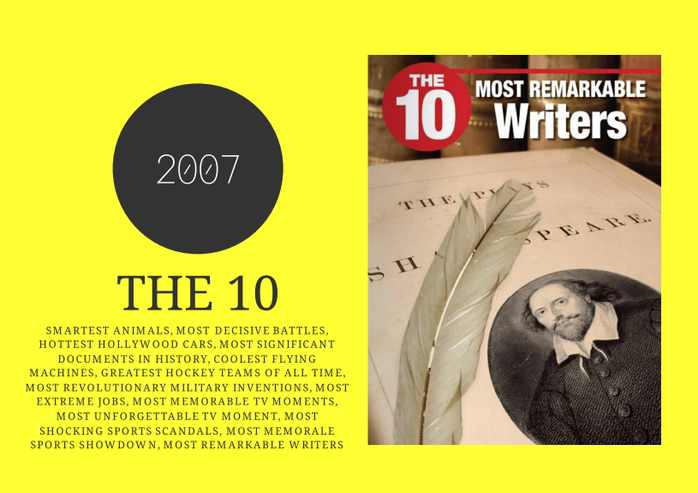










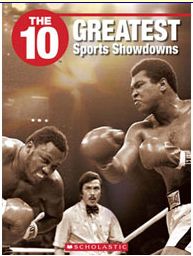
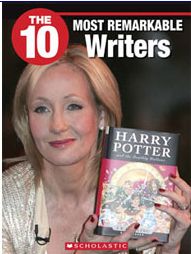

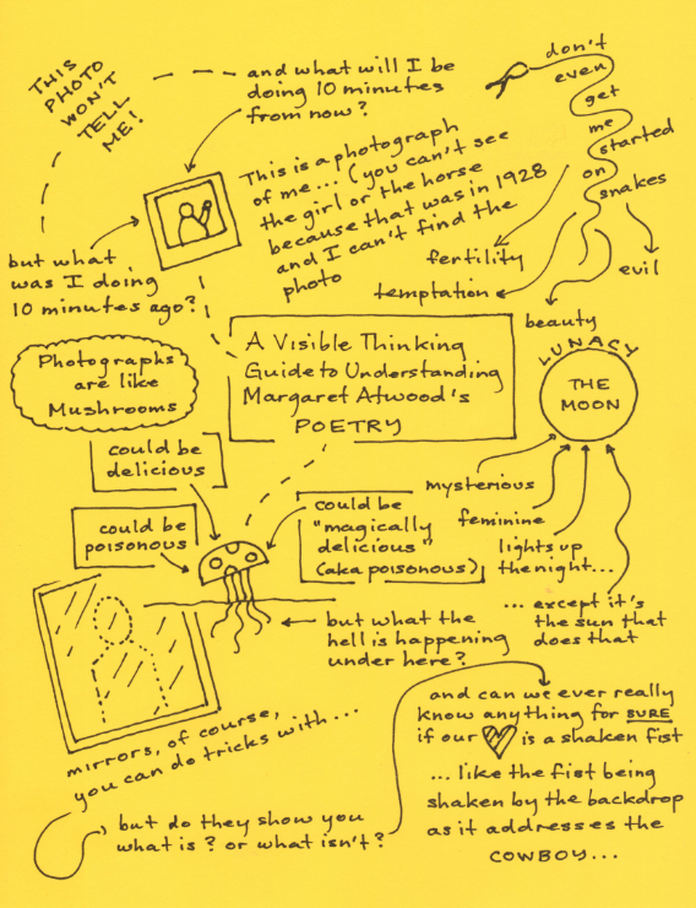



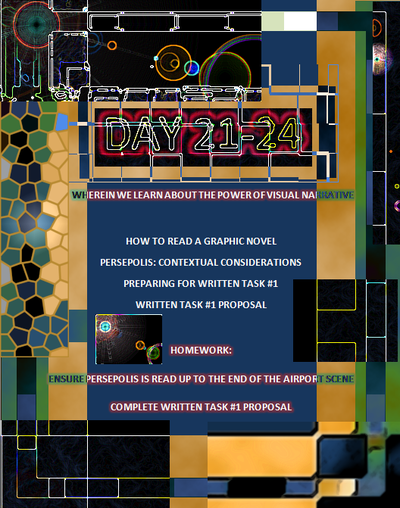


















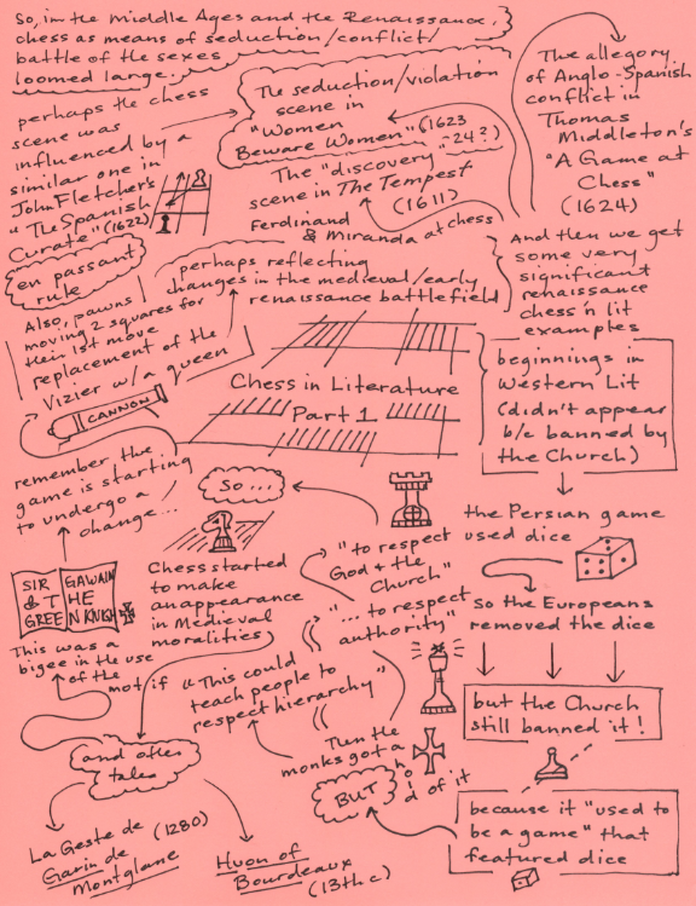



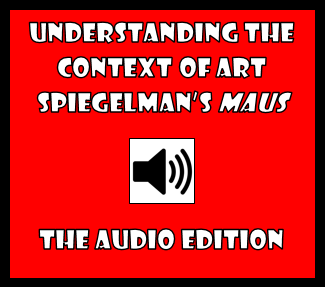
 RSS Feed
RSS Feed
